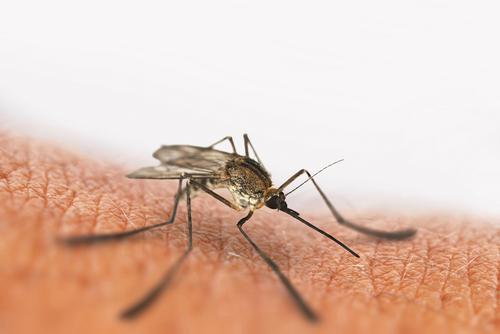Sudden, altered body odour could indicate malaria: Study
ANI May 15, 2018
According to a study conducted by researchers at the Penn State, suddenly altered body odour indicates malaria even if the microscope doesn't.

Typhoid Mary may have infected a hundred or more people, but asymptomatic carriers of malaria infect far more people every year. An international team of researchers was working toward a way to identify malaria patients including infected individuals who show no malaria symptoms and hence made the interesting discovery.
People who have malaria but are not symptomatic abound in the heaviest areas of malaria infestation. Even blood tests do not necessarily pick up the infection with the Plasmodium parasite, especially at low parasite densities. DNA tests for the parasite usually show infection, but they are far from rapid.
"Our previous work in a mouse model found that malaria infection altered the odours of infected mice in ways that made them more attractive to mosquitoes, particularly at a stage of infection where the transmissible stage of the parasite was present at high levels," said researcher Consuelo De Moraes.
The researchers wanted to see if they could identify changes in human odours associated with malaria infection that might be useful for diagnosing infected individuals. They were particularly interested in identifying those who were infected but had no symptoms. Only if both microscopy and DNA studies were negative were subjects considered malaria-free. Infected patients for the initial studies were both microscopy and DNA positive for malaria.
In some later analyses, the researchers included 77 people who were positive for malaria according to DNA but showed no parasites in the microscopic tests. Malaria infection does not create new volatile chemicals in the body but alters the amounts - up or down - of volatile chemicals that are already present in the odours of healthy people.
"It is interesting that the symptomatic and asymptomatic infections were different from each other as well as from healthy people," said researcher Mark C. Mescher. This difference among infected, infected asymptomatic, and healthy individuals may eventually lead to tests capable of rapidly and accurately identifying infected people, even those without symptoms. The researchers reported that predictive models using machine learning reliably identify infection status based on volatile biomarkers.
They stated, "Our models identified asymptomatic infections with 100 percent sensitivity, even in the case of low-level infections not detectable by microscopy." These results far exceed any currently available rapid diagnostic tests. The study appears in the journal Proceedings of the National Academy of Sciences.
-
Exclusive Write-ups & Webinars by KOLs
-
Daily Quiz by specialty
-
Paid Market Research Surveys
-
Case discussions, News & Journals' summaries